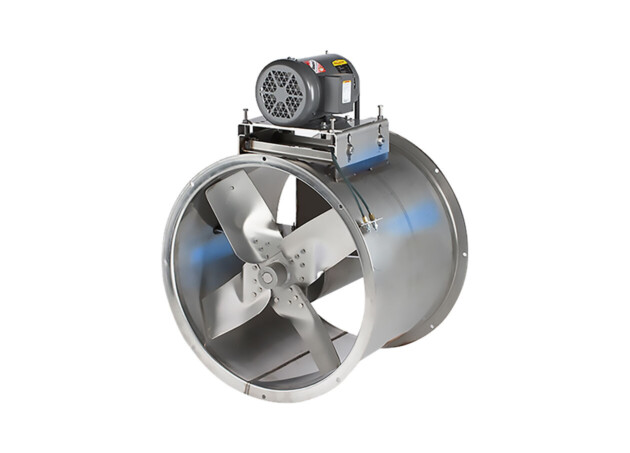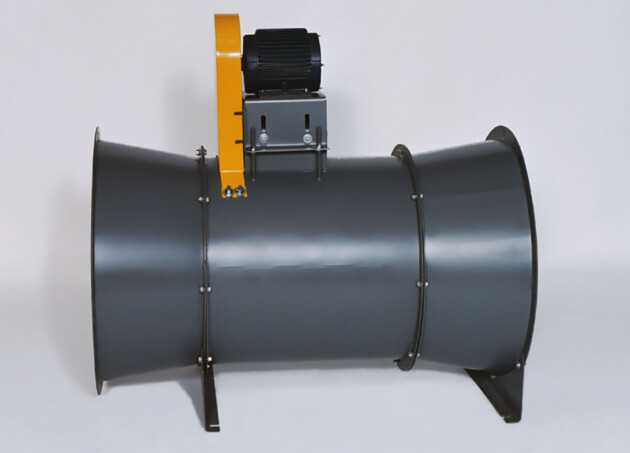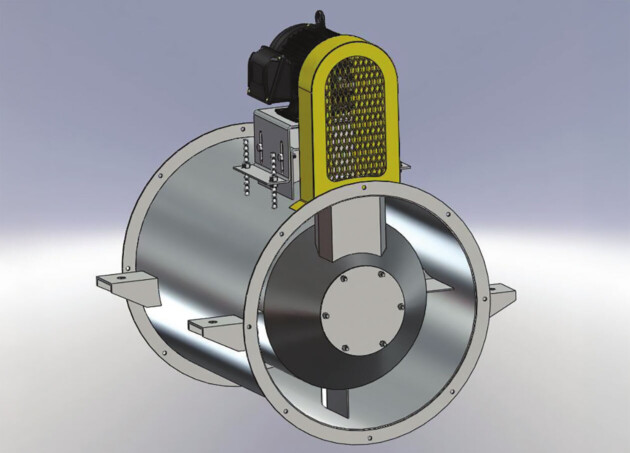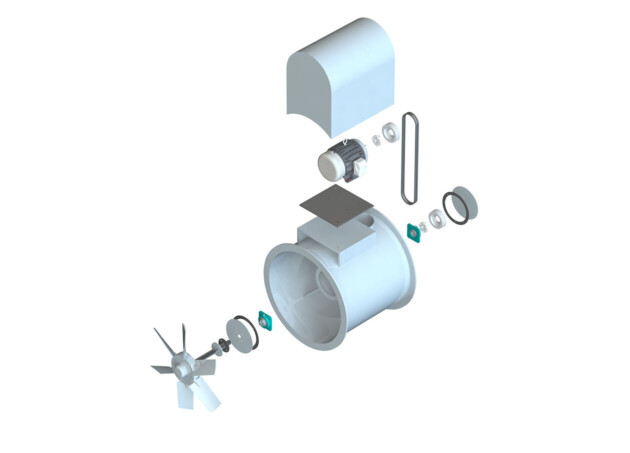Duct & Inline Axial Fans
Purpose: Efficiently move air through ducts or enclosed pathways with minimal air loss.
Applications: HVAC systems, confined space ventilation, exhaust systems, inline airflow control.
Includes: Vane Axial Fans, Duct Axial Fans, Inline Axial Fans.
Duct and inline axial fans are designed to efficiently move large volumes of air through ducts, tunnels, or other enclosed spaces. These fans excel in ventilation systems where air needs to travel through a confined path—whether for cooling, exhaust, or fresh air supply—while maintaining consistent flow and minimal pressure loss.
Within this category, three primary types stand out: vane axial fans, duct axial fans, and inline axial fans. While all three operate on the same axial airflow principle—moving air in a straight line along the fan's axis—they are built for different levels of performance and installation requirements.
Vane Axial Fans are the most powerful of the three. They include fixed or adjustable guide vanes that straighten and accelerate airflow, allowing for higher pressure capability than other axial types. These fans are ideal for demanding industrial or commercial environments such as factories, tunnels, data centers, or emergency smoke extraction systems. If your application involves high-speed airflow through long duct runs or resistance-heavy systems, vane axial fans are the best choice.
Duct Axial Fans, also known as tube axial fans, are a more straightforward, cost-effective solution for medium-duty ducted airflow. These fans consist of a propeller mounted inside a cylindrical housing and are typically installed inline within ductwork. They are commonly used for paint booth exhaust, engine room ventilation, electrical cabinet cooling, and general-purpose air movement. While they don’t offer the same static pressure performance as vane axial fans, they are highly effective for moving large volumes of air over shorter distances or with moderate resistance.
Inline Axial Fans are designed for quieter, more space-sensitive applications. Typically smaller and more compact, these fans are often found in commercial HVAC systems—helping ventilate bathrooms, kitchens, utility rooms, or electronics enclosures. They’re appreciated for their quiet operation, flexible installation, and discreet design, making them a great fit for areas where performance must be balanced with low noise and minimal space usage.
Choosing the right fan depends on your system’s airflow needs, pressure requirements, noise sensitivity, and space constraints. Contact the experts at DMC Sales, Inc. for tailored guidance—we’ll help ensure your system runs efficiently and reliably.











